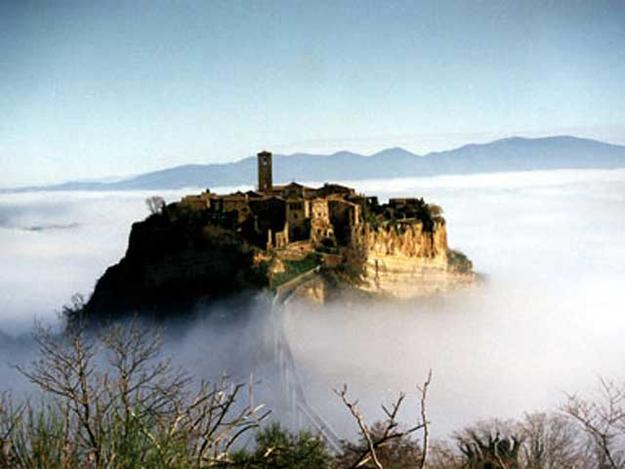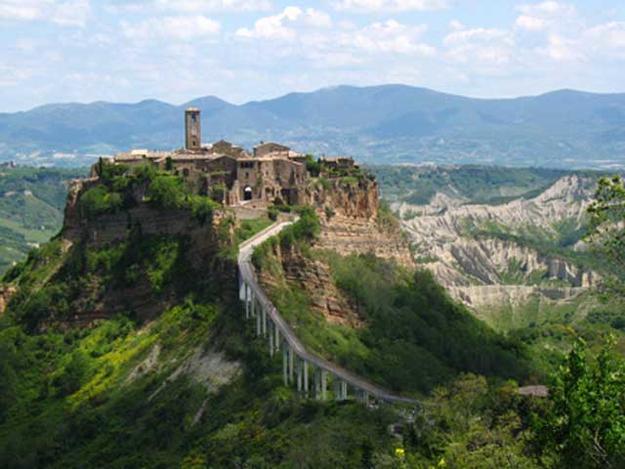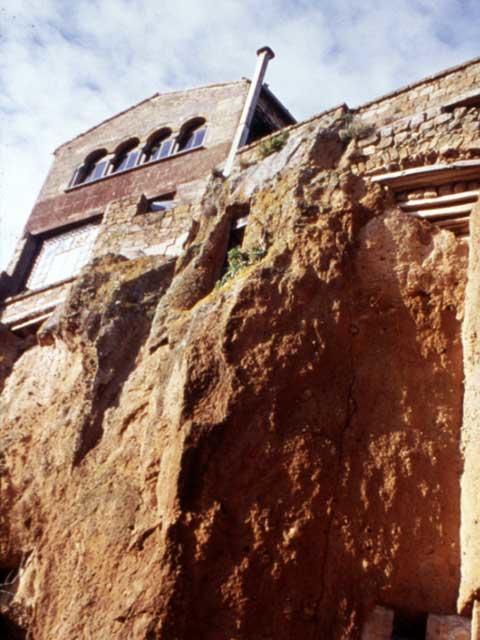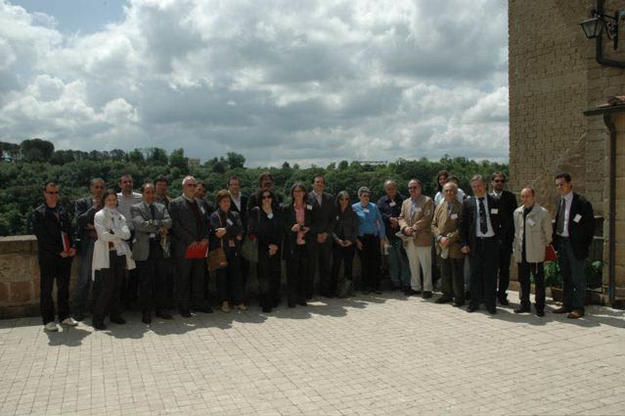Civita Di Bagnoregio
2006 World Monuments Watch
Established by the Etruscans in the sixth century B.C., Civita di Bagnoregio was one of many towns in central Italy that was hewn atop a hill of tufa, the soft volcanic rock that distinguishes the region’s natural landscape. Built in part for defensive purposes, most of the hill settlements retain extensive networks of carved underground passages and chambers. Civita is threatened by the erosion of the tufa, which is in danger of collapsing under the historic architecture at its northwest bluff. Secondary threats also applicable to other nearby hill towns include the decrease in year-round inhabitants due to the abandonment of the traditional agrarian lifestyle that gave rise to the community, and uncontrolled tourism’s dramatic alteration of Civita’s social and cultural fabric. The town has less than 12 year-round occupants but receives as many as 3,000 tourists a day on summer weekends. The site was included on the 2006 World Monuments Watch in order to raise awareness for its need of conservation and tourism management plans, which have the potential to secure the protection of its historic fabric for further centuries.
An international symposium on the future of “tuff towns”
In May 2008 World Monuments Fund supported an international symposium on Italian “tuff towns,” and Civita di Bagnoregio was a principle case study in the ensuing discussions. Short and long-term plans for the protection of the village and others like it were developed during the event, and several collaborations resulted between the heritage professionals that attended. In the spring of 2013, authorities in Civita began to charge €3 for each entering tourist in order to raise money for the upkeep of the site. In the fall of that year the resources paid for part of reinforcement works carried out on the north and south slopes of the tuff hill, as well repairs to the access bridge leading into the town. After a devastating landslide in May 2015 that caused the temporary closure of the bridge, the governor of Lazio called for Civita’s inclusion on UNESCO’s World Heritage list. A decision is expected in 2017.




